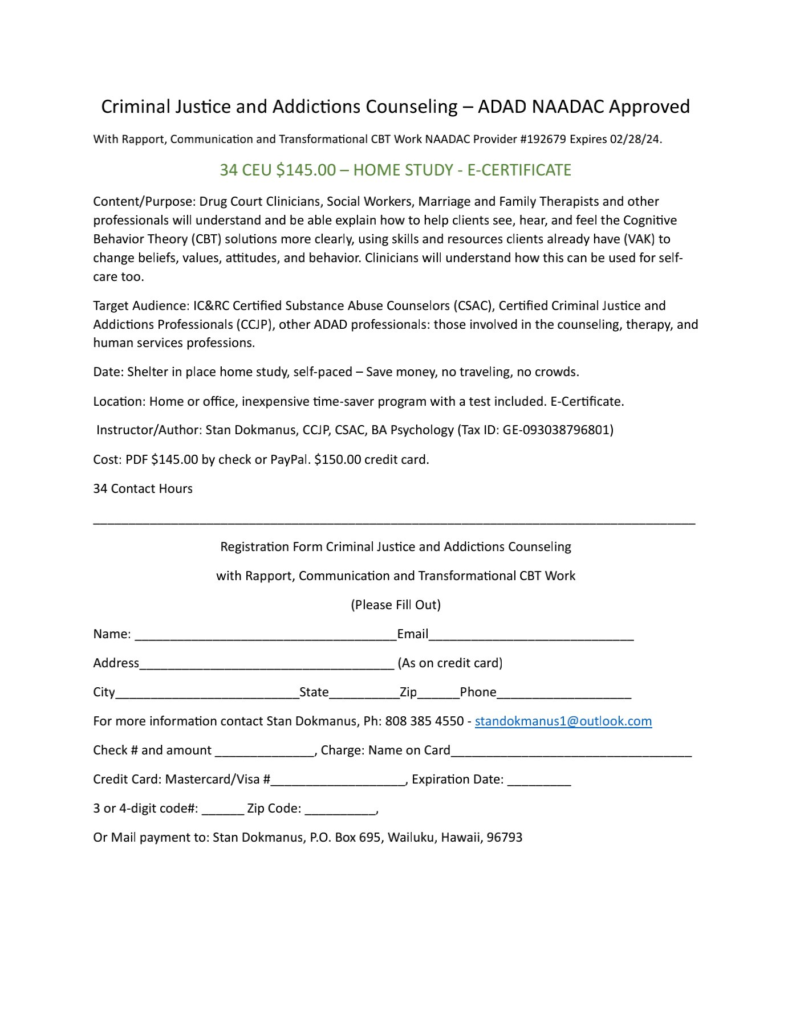The power of beliefs is amazing. Last week, I included what I “believed” to be a link to my Udemy Course called Criminal Justice and Addictions Counseling. It is a thirty-four CEU NAADAC approved home study course, Provider #192679. I was wrong.
“My belief” was erroneous.
Regardless, I guarantee that you will find new ideas about how to do CBT with clients and patients if you check out the course. This course presents ideas about how to create change. How to change limiting beliefs and behaviors.
I apologize about my belief about the incorrect link. I’m going to try to post the Udemy link here today.
https://lnkd.in/gR7ntCQK
I may have learned something new to me. LinkedIn may not allow a Udemy link. I posted the link directly above. It will be interesting to see if it remains. If you don’t see it, you know why. And that’s – okay.
“Acceptance,” is the key.
How AI can help us.
It provides a vast research body of verifiable information. We must use due diligence.
If the information looks wonky, don’t use it. Correct it so it fits the context.
Provide attribution giving AI credit for being your source.
I’ve found it to be amazing time-saver.
Back to the link.
Was my belief irrational as the REBT of Albert Ellis say? Was it simply a limiting belief? Harmful to no one but me.
Why is having a belief change skill so important?
I have a criminal justice, drug court IOP background. The two major goals of drug courts are:
1. Reduce recidivism.
2. Reduce the cost of crime and treatment.
The CBT image map below, shows that beliefs are the first part of the CBT process. Ellis’ ABC-DE Theory explains how it works from the event to the behavior choice.
Why are beliefs important? Wanberg and Milkman: “There will be no long-term [CTC] behavior changes unless you change core beliefs first.”
To paraphrase Judith S. Beck (Cognitive Behavior Theory),”When it comes to addiction, you must address the permission-granting beliefs as soon as possible…”
If drug courts and treatment providers want to help reduce recidivism and the cost of crime, why not adopt a belief change protocol for each client?
My belief is any organization can improve care by including a specific belief change protocol for the program and specific to clients and their individual stages of change.
I’m available for individual or group training. These can be live or by Zoom.
Let’s face it. We all have limiting beliefs about something. Our identity, values, capabilities, behavior, Imposter Syndrome, etc. Add hopeless, helpless and worthless and you can see why depression and substance abuse are problems for so many.
Change the beliefs and you change the outcomes. That’s what Belief Eye Movement Therapy is all about.
Drug Court Treatment: The Verdict. Amazon.com
